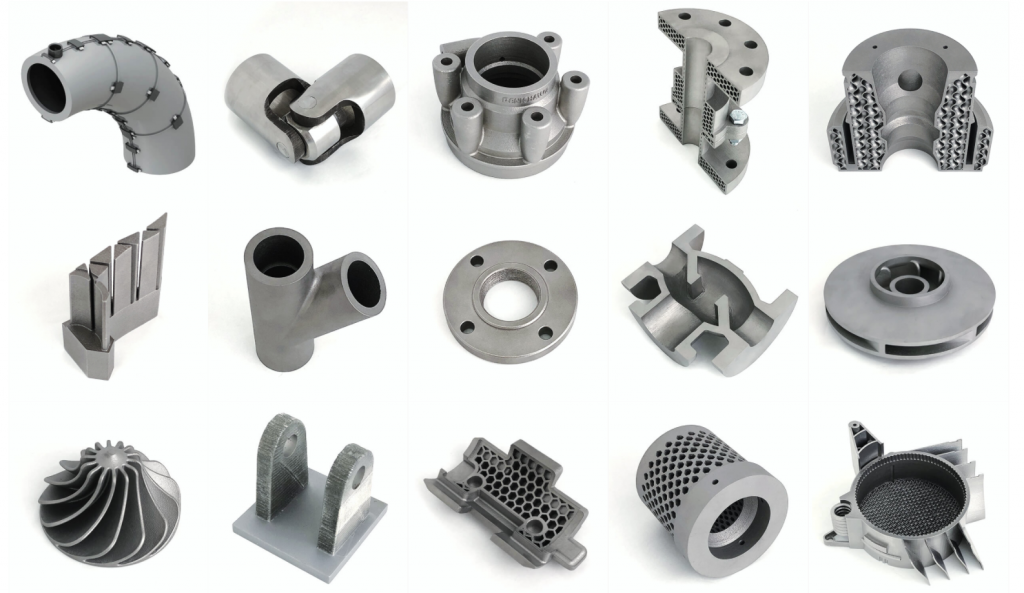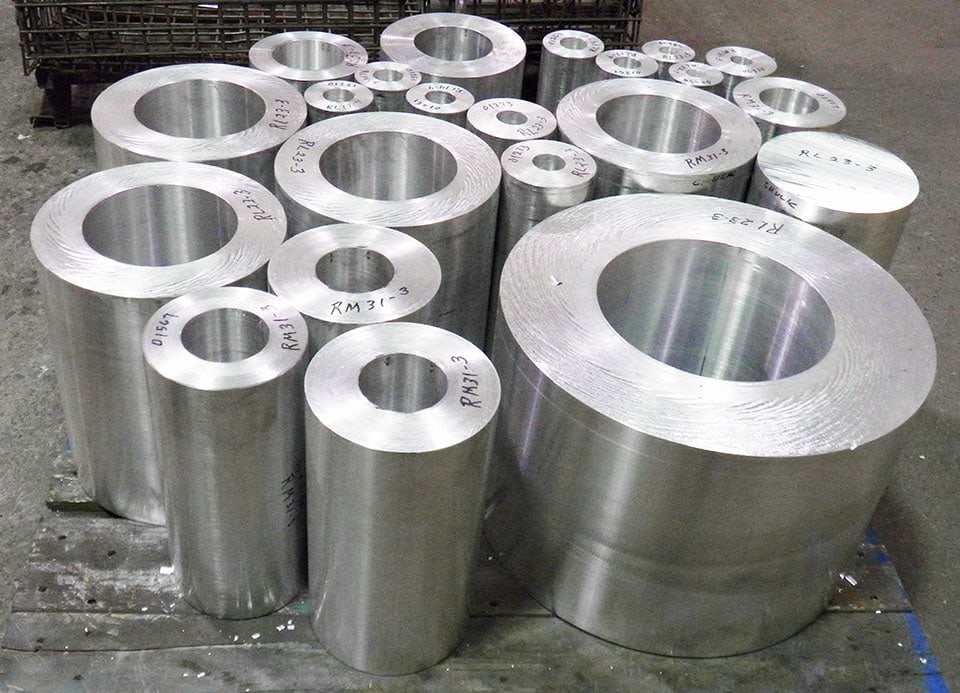The increasing demand for Metal Castings in global markets
Wiki Article
Discovering the Crucial Applications of Light Weight Aluminum Castings Across Different Fields
Aluminum spreadings play an essential role in numerous markets. Their durable and lightweight attributes add to developments in automotive and aerospace fields. Furthermore, they boost building and construction integrity and consumer item style. As sustainability becomes a top priority, the ecological benefits of light weight aluminum castings further highlight their relevance. Recognizing the considerable applications of this product can disclose insights right into modern manufacturing techniques. What details developments are being made in these various markets?Automotive Industry Innovations

Furthermore, aluminum spreadings play a crucial role in electrical automobiles, where weight reduction is extremely important for battery effectiveness. With the integration of light weight aluminum in engine blocks, transmission real estates, and structural elements, car manufacturers can accomplish remarkable resilience while keeping peak performance. As the need for sustainable and effective automobiles grows, the automotive field continues to accept aluminum spreading innovations, positioning itself at the center of technological developments and environmental obligation.
Aerospace Advancements
While the aerospace sector constantly seeks means to improve performance and effectiveness, developments in aluminum spreadings have actually arised as a critical variable in achieving these goals. The light-weight nature of light weight aluminum significantly adds to sustain performance, reducing total aircraft weight without jeopardizing architectural honesty. Innovations in casting techniques, such as die spreading and financial investment spreading, permit intricate styles that improve the rules of aerodynamics and performance.Furthermore, innovations in metallurgy have boosted the toughness and deterioration resistance of aluminum alloys, making them appropriate for numerous aerospace applications, including engine components and body frameworks. The ability to create complicated forms reduces the number of components required, streamlining assembly procedures and decreasing upkeep needs. As aerospace makers significantly turn to aluminum spreadings, they are discovering that these innovations not only drive operational performance yet also sustain sustainability goals with minimized power consumption throughout flight.
Building Applications
Light weight aluminum spreadings play a pivotal duty in the building market, offering a mix of stamina, sturdiness, and light-weight residential properties that improve structural integrity. Aluminum Foundry. These spreadings are utilized in a range of applications, including home window frames, door frameworks, and roof, where their resistance to corrosion and weathering is especially helpful. Light weight aluminum castings contribute to energy effectiveness, as their lightweight nature minimizes the overall tons on structures, helping with easier transportation and setup.Furthermore, the adaptability of light weight aluminum permits for complicated geometries and complex styles, conference aesthetic requirements without compromising structural performance. In seismic regions, aluminum spreadings can be used in vital architectural parts, supplying substantial benefits relating to adaptability and strength. On the whole, the use of aluminum spreadings in construction not only boosts the efficiency of buildings however additionally supports sustainable building techniques by making it possible for making use of recyclable products in construction jobs.

Durable Goods Manufacturing
In durable goods making, aluminum castings play an essential role in lightweight item design, enabling for simpler handling and boosted performance. Their boosted toughness attributes contribute to the longevity and integrity of daily items. This mix of advantages makes light weight aluminum a preferred material in the affordable durable goods market.Light-weight Product Design
As manufacturers significantly focus on efficiency and sustainability, light-weight item design has actually emerged as an important aspect of consumer goods advancement. The combination of aluminum castings enables designers to develop products that are not just lighter however additionally a lot more energy-efficient. This reduction in weight adds to lower transportation expenses and enhanced user experience, as consumers significantly seek easier-to-handle goods. Additionally, light-weight designs help with innovative aesthetic appeals, allowing brands to distinguish themselves in an affordable market. The flexibility of aluminum enables elaborate shapes and kinds, improving general layout freedom. Light-weight item design is becoming important for business intending to meet contemporary customer needs while sticking to ecological factors to consider. This trend is improving exactly how products are conceived and manufactured throughout Metal Castings various sectors.Improved Toughness Functions
While modern customers demand products that are both lightweight and visually pleasing, enhanced longevity functions have ended up being just as essential in durable goods making. Light weight aluminum castings supply phenomenal strength-to-weight proportions, allowing producers to produce products that withstand day-to-day deterioration. The fundamental rust resistance of aluminum assurances that products maintain their look and functionality gradually, reducing the need for constant replacements. Furthermore, casting methods make it possible for the manufacturing of smooth designs that enhance structural stability. Therefore, makers can deliver durable goods that not just meet performance assumptions yet also give durability. This concentrate on resilience not just improves client complete satisfaction but additionally lines up with sustainability goals by decreasing waste and promoting accountable intake.Electric and Electronics Industry
The electrical and electronics field significantly counts on light weight aluminum spreadings for their lightweight, long lasting, and extremely conductive homes. These spreadings are indispensable in producing different components, including housings, enclosures, and warm sinks. Their low thickness permits minimized overall weight in digital tools, boosting portability without compromising performance. Additionally, aluminum's superb thermal conductivity is important for dissipating heat created by digital parts, guaranteeing ideal functioning and longevity.In addition, aluminum castings give outstanding corrosion resistance, which is vital for preserving electronic stability in numerous environments. The ability to create intricate forms and elaborate designs through casting methods further sustains go now advancement in item growth, allowing producers to satisfy specific technological demands. As the demand for high-performance and energy-efficient digital tools remains to grow, light weight aluminum spreadings are placed as a crucial product, promoting improvements in innovation across the industry. Their versatility and integrity make them important in the contemporary electrical and electronic devices landscape.
Sustainability and Ecological Influence
Identifying the growing problem for environmental sustainability, the light weight aluminum spreading sector has actually made substantial strides in lowering its eco-friendly impact. The production of aluminum castings currently significantly utilizes recycled products, minimizing energy intake and basic material removal. This shift not only saves resources yet additionally reduces greenhouse gas emissions related to primary light weight aluminum production.
Furthermore, improvements in innovation have led to much more effective casting procedures, better lowering waste and improving power efficiency. Lots of producers are adopting lasting practices such as closed-loop systems that recycle water and lower industrial waste.
Light weight aluminum's light-weight nature enhances gas effectiveness in transportation fields, adding to lower emissions over the lifecycle of lorries. As the sector continues to introduce and prioritize sustainability, light weight aluminum castings are positioned to play an essential duty in advertising environmentally responsible methods across numerous sectors, aligning with worldwide efforts to fight climate change and promote sustainable development.
Often Asked Questions
What Are the Benefits of Light Weight Aluminum Castings Over Various Other Materials?
Light weight aluminum spreadings provide light-weight residential properties, outstanding rust resistance, and great thermal conductivity. Additionally, they make it possible for complex styles, reduce manufacturing costs, and offer boosted sturdiness, making them helpful compared to traditional products like steel or iron.Exactly How Are Light Weight Aluminum Castings Produced?
Aluminum castings are generated through procedures like sand casting, die spreading, and financial investment casting. Molten light weight aluminum is poured right into mold and mildews, enabled to cool, and after that removed, causing resilient and precise components for different applications.What Is the Typical Life-span of Light Weight Aluminum Castings?
The normal life-span of aluminum spreadings differs between 10 to 50 years, depending on environmental aspects, use problems, and alloy structure. Correct maintenance and care can significantly prolong their resilience and performance in various applications.Can Aluminum Castings Be Reused?
Yes, aluminum spreadings can be recycled efficiently (Wisconsin Aluminum Foundry). The recycling procedure keeps the metal's properties, making it a lasting alternative for different applications, subsequently contributing to environmental conservation and source management within numerous marketsWhat Industries Are Arising for Aluminum Spreading Applications?
Emerging sectors for light weight aluminum spreading applications include electrical automobile production, renewable resource fields, aerospace developments, and clinical innovation. These markets take advantage of light weight aluminum's lightweight, resilient properties to boost and introduce performance in numerous products and systems.While the aerospace market continuously looks for methods to enhance efficiency and efficiency, improvements in light weight aluminum castings have actually arised as a critical element in accomplishing these goals. Aluminum spreadings play a critical role in the building industry, using a mix of stamina, resilience, and light-weight properties that improve structural honesty. In customer goods making, light weight aluminum spreadings play a vital duty in light-weight item style, enabling for less complicated handling and enhanced effectiveness. The electrical and electronic devices industry Resources progressively counts on light weight aluminum castings for their lightweight, sturdy, and highly conductive buildings. Light weight aluminum castings are generated via procedures like sand spreading, die casting, and investment casting.
Report this wiki page